COVID-19 Update: Thursday, November 5
The following is the latest COVID-19 information from the state and federal governments as of 3:00 p.m. on Thursday, November 5.
Pennsylvania Update
Department of Health
The Department of Health updated its hospital guidance to clarify that hospitals must test COVID-19 patients prior to discharge to another facility and communicate those test results to the receiving facility prior to discharge.
In response to an increase of new COVID-19 cases in Huntingdon County, the Department of Health contracted for drive-through and indoor testing clinics in the county from October 29 through Monday, November 2.
 During a news conference this week, Secretary Levine noted that Pennsylvania is now seeing more COVID-19 “long-haulers”: people who continue to experience COVID-19 symptoms over a period of months.
During a news conference this week, Secretary Levine noted that Pennsylvania is now seeing more COVID-19 “long-haulers”: people who continue to experience COVID-19 symptoms over a period of months.
Even though current case counts in Pennsylvania are higher than they were during the earlier days of the pandemic, fewer people are hospitalized with the disease, fewer are being treated on ventilators, and fewer are dying. Secretary Levine attributes these improvements to better medical care, more experience treating COVID-19 patients, and better therapeutics. In addition, long-term-care facilities are doing a better job of preventing and limiting outbreaks. She attributed this improvement in part to the help those facilities are receiving through the state’s Regional Response Health Collaborative program.
She also noted that cases are less concentrated among elderly Pennsylvanians than in the pandemic’s early days and that younger people are better equipped to fight the disease.
The state recently released data that illustrates this change:
- In north central Pennsylvania, approximately seven percent of cases in April were among people ages 19 to 24 while that same age group accounted for approximately 28 percent of cases in October.
- In northeastern Pennsylvania, that figure rose from six percent of cases in April to approximately 16 percent of cases in October.
- In southeastern Pennsylvania it rose from nearly five percent of cases in April to nearly 14 percent of cases in October.
- In southeastern Pennsylvania it rose from approximately five percent of cases in April to nearly 12 percent of cases in October.
- In northwestern Pennsylvania it rose from nearly seven percent of cases in April to approximately 14 percent of cases in October.
- In south central Pennsylvania it rose from approximately seven percent of cases in April to approximately 12 percent of cases in October.
The state is still struggling with people unwilling to cooperate with contact tracers when they are informed that they have COVID-19, Secretary Levine continued. Only 24 percent are currently doing so.
Among those who are cooperating, in the past week more than half of those people said they had been in a restaurant or “large business” or mass gathering setting in the past two weeks.
Department of Health COVID-19 Vaccine Planning
 Last week we introduced you to an executive summary of Pennsylvania’s COVID-19 vaccination plan. Today, Secretary Levine held a news briefing to provide additional information about Pennsylvania’s plan. According to a report in the York Daily Record, Secretary Levine said that the state intends to distribute the vaccines in phases and that “In the first phase, when vaccine doses are likely to be limited, high-risk workers in health care settings, first responders, other essential workers, people with pre-existing health conditions and adults in long-term care are likely to be prioritized.” Learn more from the York Daily Record article.
Last week we introduced you to an executive summary of Pennsylvania’s COVID-19 vaccination plan. Today, Secretary Levine held a news briefing to provide additional information about Pennsylvania’s plan. According to a report in the York Daily Record, Secretary Levine said that the state intends to distribute the vaccines in phases and that “In the first phase, when vaccine doses are likely to be limited, high-risk workers in health care settings, first responders, other essential workers, people with pre-existing health conditions and adults in long-term care are likely to be prioritized.” Learn more from the York Daily Record article.
Department of Health – by the numbers
- Pennsylvania’s number of COVID-19 cases recently surpassed 220,000. The past week has seen the highest number of new cases on a daily basis since the pandemic began and Thursday’s new case count was the state’s new single-day high.
- The number of new cases in Pennsylvania during the week ending October 29 was 43 percent higher than the previous week.
- With today’s latest figures, the death count now exceeds 8900.
- Of that number, 61 percent have been residents of long-term-care facilities.
- Overall, nearly 27,000 residents of long-term-care facilities and more than 5800 people who work in those facilities have contracted COVID-19. Those figures encompass 1100 facilities in 63 of Pennsylvania’s 67 counties.
- More than 12,700 health care workers in the state have contracted COVID-19.
- The number of people currently hospitalized with COVID-19 is higher than it has been at any time since May.
- The number of COVID-19 patients currently breathing with the help of a ventilator is higher than it has been since mid-June.
- 20 percent of hospital adult ICU beds are currently unoccupied, as are 18 percent of medical/surgical beds, 33 percent of pediatric beds, 12 percent of pediatric ICU beds, and 37 percent of airborne isolation unit beds.
- The state-wide positivity rate on COVID-19 tests rose from five percent two weeks ago to six percent last week.
- A positivity rate greater than five percent is considered “concerning,” Secretary Levine explained during her news briefing, adding that currently, 40 counties have rates higher than five percent. Only 30 counties were at that level the previous week, she added.
- According to the early warning dashboard released weekly by the governor and Department of Health, the following counties are currently experiencing “substantial level of transmission” of COVID-19: Armstrong, Berks, Blair, Bradford, Cambria, Centre, Crawford, Dauphin, Delaware, Franklin, Fulton, Huntingdon, Indiana, Lackawanna, Lawrence, Lebanon, Lehigh, Luzerne, Mifflin, Philadelphia, Schuylkill, Tioga, Venango, Westmoreland, Wyoming, and York.
 Department of Human Services
Department of Human Services
DHS is no longer requiring non-nursing home providers to submit interim reporting on their CARES ACT/Act 24 spending. Interim reports would have been due on November 6 and are still required of nursing homes.
DHS’s Office of Long-Term Living and Office of Developmental Programs (ODP) have updated their guidance on COVID-19 for personal care homes, assisted living residences, and private intermediate-care facilities.
ODP has issued guidance to individuals, families and designated persons, licensed and enrolled providers of ODP residential services, and all interested parties on developing visitation policies in ODP residential settings to protect residents, staff, and visitors from COVID-19.
Federal Update
Provider Relief Fund
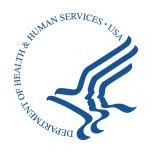 A reminder that applications for Phase 3 general distribution payments are due Friday, November 6.
A reminder that applications for Phase 3 general distribution payments are due Friday, November 6.- HHS has updated the Provider Relief Fund FAQ with two modified items; the second bullet below addresses the deadline for Phase 3 applications.
- p. 6 – Does HHS intend to recoup any payments made to providers not tied to specific claims for reimbursement, such as the General or Targeted Distribution payments? ( Modified 11/5/2020)
The Provider Relief Fund and the Terms and Conditions require that recipients be able to demonstrate that lost revenues and increased expenses attributable to COVID-19, excluding expenses and losses that have been reimbursed from other sources or that other sources are obligated to reimburse, exceed total payments from the Relief Fund. Provider Relief Fund payment amounts that have not been fully expended on the combination of healthcare expenses and lost revenues attributable to coronavirus by the end of the final reporting period, must be returned to HHS. HHS reserves the right to audit Relief Fund recipients in the future to ensure that this requirement is met and collect any Relief Fund amounts that were made in error or exceed lost revenue or increased expenses due to COVID-19. Failure to comply with the Terms and Conditions may be grounds for recoupment.
- p. 41 – Tax Identification Number (TIN) Validation Process
When is the deadline to submit an application? (Modified 11/5/2020)
The deadline to submit an application under Phase 3 – General Distribution is November 6, 2020 at 11:59 PM EST for those that have had their TIN validated in Phase 2 or received funds as part of Phase 1. Any entity that has not yet received any General Distribution payments must submit their TIN for validation by November 6, 2020 at 11:59 PM EST. If the TIN is validated by November 13, 2020 at 11:59 PM EST, the entity will have until November 27, 2020 at 11:59 PM EST to submit an application.
Department of Health and Human Services
- HHS’s Office of the National Coordinator for Health Information Technology (ONC) has posted FAQs about the information-blocking provisions of the regulation it published last week extending until April of 2021 the agency’s deadline for complying with its information-blocking requirements. Find those FAQs here.
Centers for Medicare & Medicaid Services
 CMS’s online publication MLN Connects directs providers and others to its COVID-19 vaccine toolkit for information about preparing to administer such vaccines when they become available.
CMS’s online publication MLN Connects directs providers and others to its COVID-19 vaccine toolkit for information about preparing to administer such vaccines when they become available.- CMS has updated its provider-specific fact sheets on new COVID-19-related waivers and flexibilities for the following providers:
- Home Health Agencies
- Physicians and Other Practitioners
- Ambulances
- Hospitals
- Teaching Hospitals, Teaching Physicians and Medical Residents
- Long Term Care Facilities (Skilled Nursing Facilities and/or Nursing Facilities
- Hospices
- Inpatient Rehabilitation Facilities
- Long Term Care Hospitals & Extended Neoplastic Disease Care Hospitals
- Rural Health Clinics (RHCs) and Federally Qualified Health Centers (FQHCs)
- Laboratories
- End Stage Renal Disease (ESRD) Facilities
- Durable Medical Equipment
- Participants in the Medicare Diabetes Prevention Program
- Medicare Advantage and Part D Plans
- Medicare Shared Savings Program Participants
Centers for Disease Control and Prevention
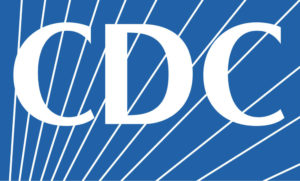 The CDC has updated its interim infection prevention and control recommendations for health care personnel during the COVID-19 emergency.
The CDC has updated its interim infection prevention and control recommendations for health care personnel during the COVID-19 emergency.- The CDC has updated its guidance for the management and clinical care of patients with confirmed cases of COVID-19.
- The CDC has updated its clinical guidelines for the collection, handling, and testing of clinical specimens from persons with confirmed or suspected cases of COVID-19.
- The CDC has updated its COVID-19 FAQs.
- The CDC has updated its explanation of its role in serology testing and has updated its guidance on the use of serology testing.
- The CDC has updated its guidance for pharmacists and pharmacy technicians working in community pharmacies during the COVID-19 emergency. The updated guidance focuses on protecting both pharmacy staff and customers.
- The CDC has updated its information regarding considerations for optimizing providers’ supplies of powered air-purifying respirators.
- The CDC has updated its guidance on considerations for wearing masks.
- The CDC has published data about the impact of COVID-19 on pregnancy.
- The CDC’s weekly morbidity and mortality report presents new research on the impact of engaging in telework on the incidence of positive COVID-19 tests among symptomatic patients at outpatient facilities.
- The CDC’s weekly morbidity and mortality report presents research on birth and infant outcomes following confirmed COVID-19 infections during pregnancy.
- The CDC has published a request for information in which it states that it seeks “…to partner with one or more organizations that have the infrastructure, capability, scalability, and safeguards to enable centralized public health laboratory data reporting from testing entities to state and large local health departments, with a focus on multi-state, large regional, and state-wide reporting entities.” Find the CDC request for information here.
Food and Drug Administration
- The FDA has alerted clinical laboratory staff and health care providers that false positive results can occur with antigen tests for the rapid detection of COVID-19. The FDA is aware of reports of false positive results associated with antigen tests used in nursing homes and other settings and continues to monitor and evaluate these reports and other available information about device safety and performance.
Congressional Research Service
- The Congressional Research Service has updated its report “The COVID-19 Health Care Provider Relief Fund.”
- The Congressional Research Service has updated its report “COVID-19 and the Uninsured: Federal Funding Options to Pay Providers for Testing and Treatment.”

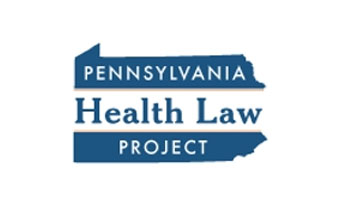
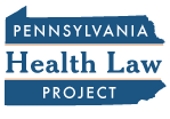 Included in this month’s edition are articles about:
Included in this month’s edition are articles about: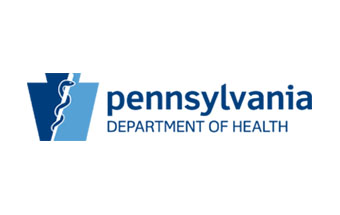
 The Department of Health updated its hospital guidance to clarify that
The Department of Health updated its hospital guidance to clarify that 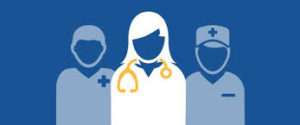 ” Healthcare related expenses attributable to coronavirus may include items such as supplies, equipment, information technology, facilities, employees, and other healthcare related costs/expenses for the calendar year. The classification of items into categories should align with how Provider Relief Fund recipients maintain their records.” [emphasis added]
” Healthcare related expenses attributable to coronavirus may include items such as supplies, equipment, information technology, facilities, employees, and other healthcare related costs/expenses for the calendar year. The classification of items into categories should align with how Provider Relief Fund recipients maintain their records.” [emphasis added] The FDA has updated its
The FDA has updated its 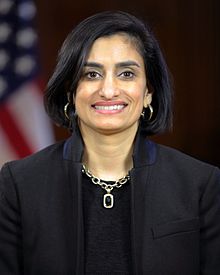 Among the issues discussed at a health care forum were the concerns of hospital administrators about rising COVID-19 case counts and their worries over the adequacy of supplies of available hospital beds, drugs, and personal protective equipment in the near future; steps like enhanced access to telehealth that CMS has made available for Medicare beneficiaries to help them during the pandemic; the work – and continued existence – of the Regional Response Health Collaboratives that support long-term-care facilities fighting COVID-19 outbreaks and the possibility that those collaboratives may expire in December; and more.
Among the issues discussed at a health care forum were the concerns of hospital administrators about rising COVID-19 case counts and their worries over the adequacy of supplies of available hospital beds, drugs, and personal protective equipment in the near future; steps like enhanced access to telehealth that CMS has made available for Medicare beneficiaries to help them during the pandemic; the work – and continued existence – of the Regional Response Health Collaboratives that support long-term-care facilities fighting COVID-19 outbreaks and the possibility that those collaboratives may expire in December; and more. The CDC has updated its
The CDC has updated its 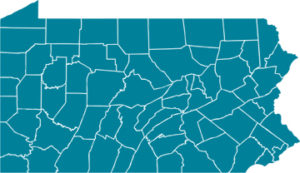 Created in July to help long-term-care facilities address their struggles responding to the COVID-19 emergency, the state has six RRHCs led by 11 Pennsylvania health systems. The RRHCs were created to provide clinical, operational, technical, and educational support to long-term-care facilities at a time when COVID-19-related deaths in such facilities accounted for more than 60 percent of all COVID-19 deaths state-wide. With financial backing from the federal CARES Act, the RRHCs support nearly 2000 long-term-care facilities of different types at which more than 127,000 Pennsylvanians currently reside.
Created in July to help long-term-care facilities address their struggles responding to the COVID-19 emergency, the state has six RRHCs led by 11 Pennsylvania health systems. The RRHCs were created to provide clinical, operational, technical, and educational support to long-term-care facilities at a time when COVID-19-related deaths in such facilities accounted for more than 60 percent of all COVID-19 deaths state-wide. With financial backing from the federal CARES Act, the RRHCs support nearly 2000 long-term-care facilities of different types at which more than 127,000 Pennsylvanians currently reside.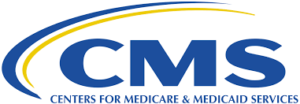 CMS announced that
CMS announced that  CMS has expanded the list of telehealth services that Medicare fee-for-service will pay for during the COVID-19 public health emergency, adding 11 new services to the Medicare telehealth services list. Medicare will begin paying for these services immediately and for the duration of the COVID-19 emergency. These new telehealth services include certain neurostimulator analysis and programming services and cardiac and pulmonary rehabilitation services. Go
CMS has expanded the list of telehealth services that Medicare fee-for-service will pay for during the COVID-19 public health emergency, adding 11 new services to the Medicare telehealth services list. Medicare will begin paying for these services immediately and for the duration of the COVID-19 emergency. These new telehealth services include certain neurostimulator analysis and programming services and cardiac and pulmonary rehabilitation services. Go  The letter refers to changes in how the federal Department of Health and Human Services wants hospitals to calculate the revenue they lost as a result of COVID-19 – the justification in part for the Provider Relief Fund payments hospitals have received through the CARES Act. In June, HHS told hospitals how to make that calculation but late last month it changed those directions in ways that could force many Pennsylvania safety-net hospitals to return some or even much of the federal aid they received.
The letter refers to changes in how the federal Department of Health and Human Services wants hospitals to calculate the revenue they lost as a result of COVID-19 – the justification in part for the Provider Relief Fund payments hospitals have received through the CARES Act. In June, HHS told hospitals how to make that calculation but late last month it changed those directions in ways that could force many Pennsylvania safety-net hospitals to return some or even much of the federal aid they received.